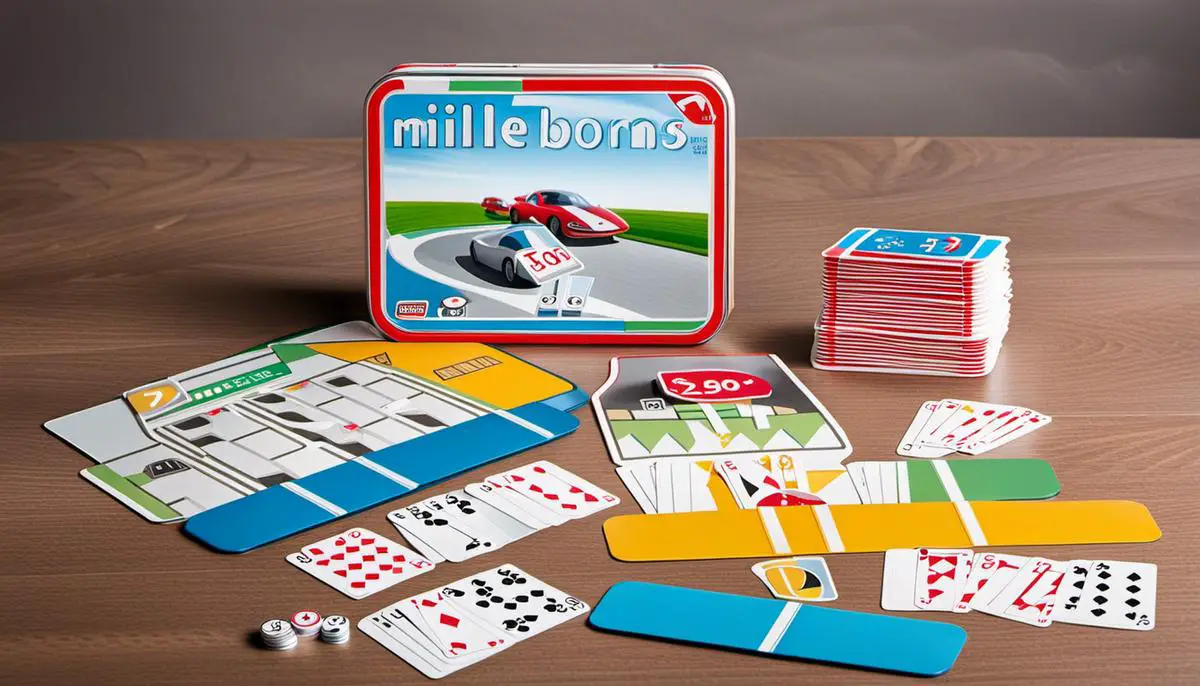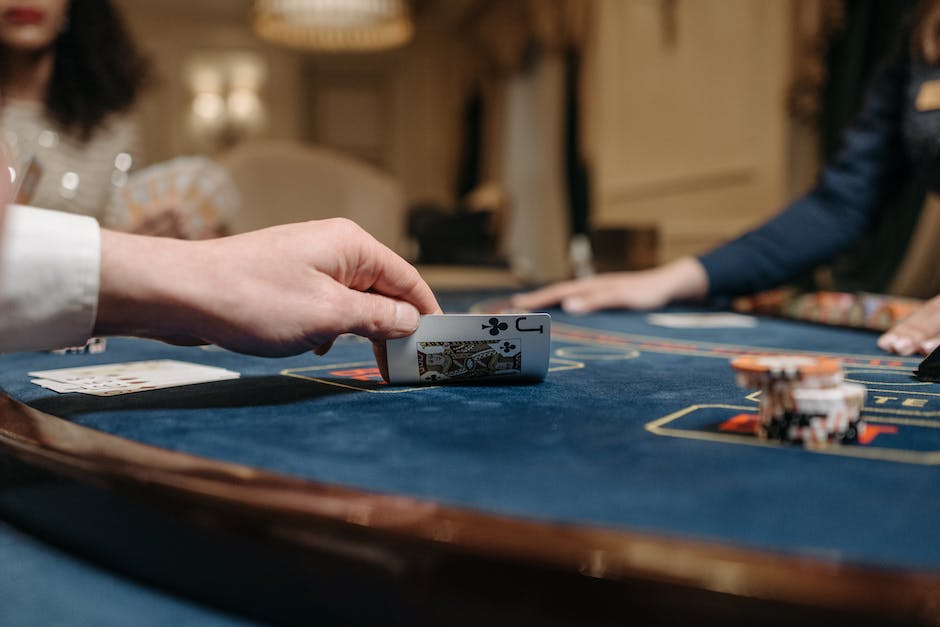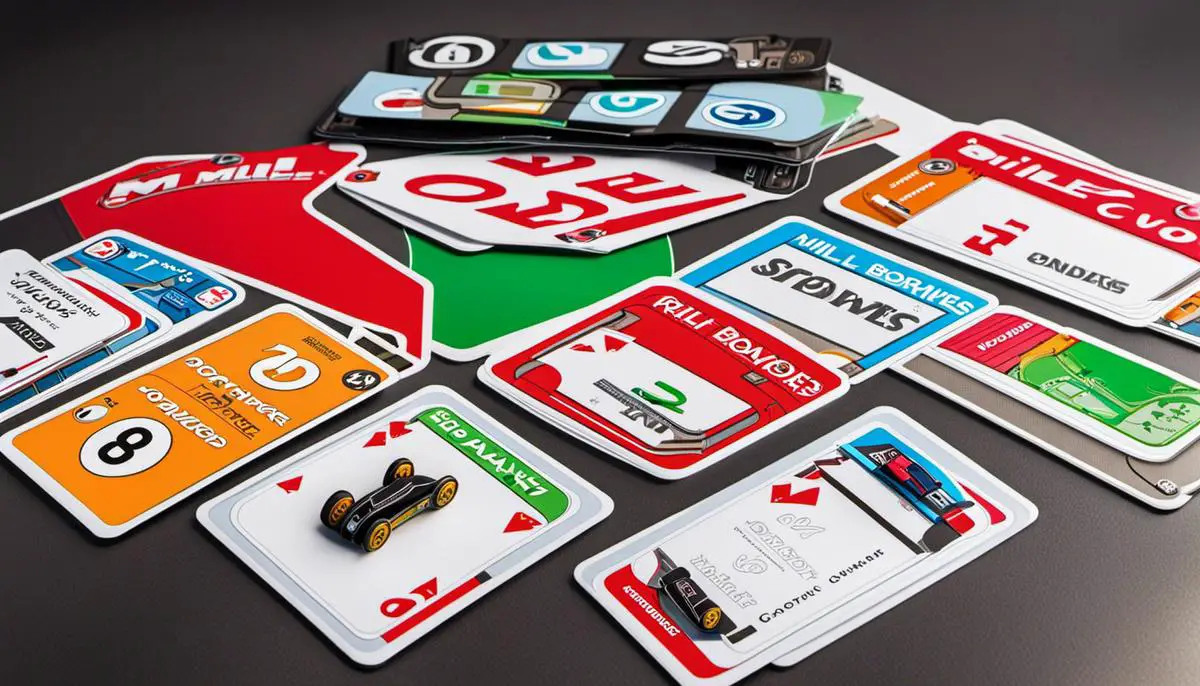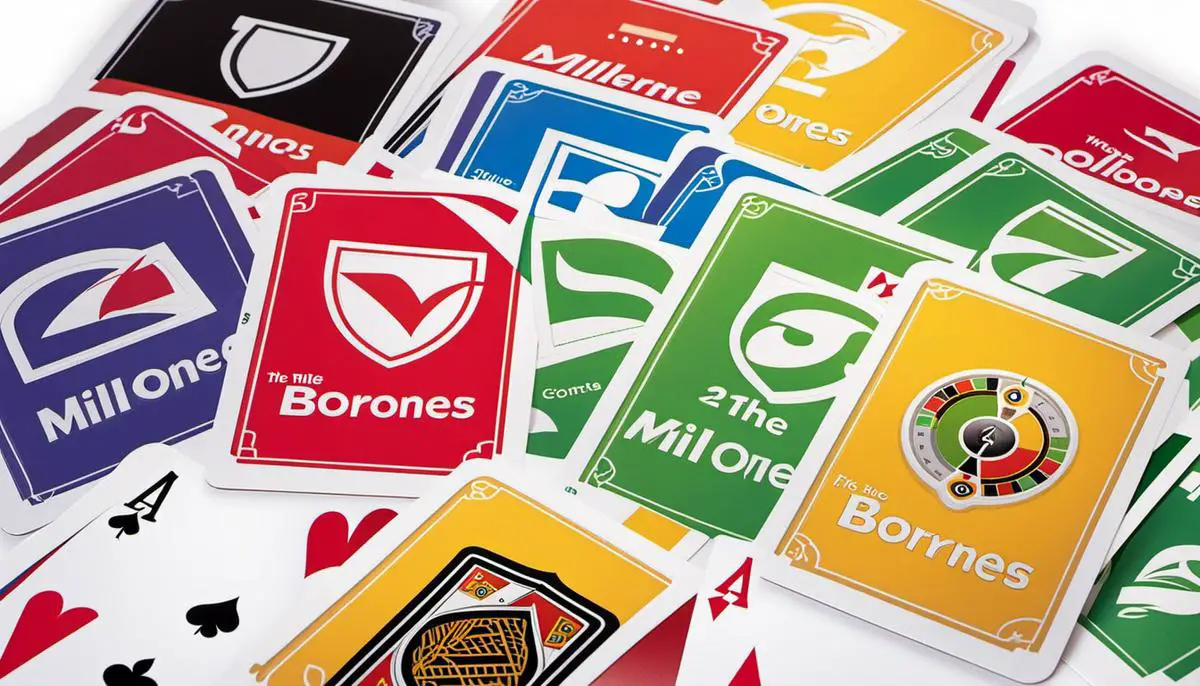Card games have long been a cherished pastime for individuals and groups alike, providing not just entertainment but also an avenue to develop strategic thinking. One such game with a unique blend of tactics, competition, and enjoyable gameplay is Mille Bornes, a classic French card game that’s conquered the hearts of players worldwide. This paper delves into the mechanics, strategies, and common pitfalls of Mille Bornes, with the aim of helping enthusiasts, regardless of their skill level, elevate their game performance. Through understanding the basic rules and nuances of the game enhanced by strategic insights, players can effectively navigate this captivating game, making ever more informed decisions and savoring the rich depth Mille Bornes has to offer.
Understanding the Basics of Mille Bornes
Understanding the Aim of Mille Bornes
The goal of the game Mille Bornes, which translates from French as “a thousand milestones,” is to be the first team or player to reach a total distance of 1,000 miles. Players do this by using distance cards (of various mile denominations), hazard cards (offensively to delay opponents), safety cards (defensively), and remedy cards (to counteract hazards).
Deck Description
Mille Bornes features a unique deck of 110 cards. Among them, there are 19 hazard cards such as accidents, flat tires, and speed limits, which are used to hamper your opponent’s progress. There are 38 distance cards divided into four types: 25-mile (10 cards), 50-mile (10 cards), 75-mile (10 cards), and 100-mile (4 cards). There are also 19 remedy cards including spare tires, gas, and more to counteract any hazards you might face. The rest of the deck comprises 14 safety cards, which protect you from certain hazards, and 4 speed limit cards, which counteract the “end of limit” cards.
Understanding Card Values
Different cards in the deck serve different purposes and hold different values. The distance cards are the primary way of accumulating the 1,000 miles needed to win. These come in denominations of 25, 50, 75, or 100 miles. Hazard cards can be played on opponents to slow their progress, while remedy cards serve to fix any issues caused by hazard cards. Safety cards offer protection against certain hazards, creating a strategic aspect to the game.
Basic Rules
The game begins with each player (or team, in the case of four players) being dealt six cards. During their turn, a player first draws a card from the deck and then plays or discards one. Players can have hazard cards set against them by opponents, which they must remedy before continuing to lay down distance cards. The round ends once a player or team reaches 1,000 miles or the draw pile is depleted. The team or player with the most miles is declared the winner.
Role of Safety, Distance, and Hazard Cards
Safety cards offer immunity against certain types of hazards and provide a bonus option to take an extra turn immediately after playing a safety card. Distance cards are used to cover miles and come in different denominations. The game has a few certain restrictions regarding how these can be played, the most important of which being that the 100-mile cards cannot be played if a ‘Speed Limit’ hazard has been set against the player. Hazard cards are played against opponents to stop their progress by causing accidents, out-of-gas situations, flat tires, or speed limits.
Playing a Standard Game Round
During an ordinary game round, the action begins with a player drawing a card, after which they may either play or discard a card. Playing a green light card is a prerequisite before placing down any distance cards. If a player is hit with a hazard, they are unable to play any distance cards until the said hazard is rectified. The round follows this cycle until a player accumulates 1,000 miles or the draw pile gets exhausted. Following every round, points are calculated, with play continuing until one player or team manages to accumulate the prearranged finishing score, often settled at 5,000 points.

Advanced Strategies in Mille Bornes
Deciphering the Fundamentals
Originating from France, Mille Bornes is a strategic card game designed to emulate a car race. At its core, the objective for the players (or teams) is to be the first to accumulate a distance of one thousand miles (or kilometers). However, beneath this basic goal, the intricate nuances of the game are revealed in the diverse range of strategies open to the players. This includes the timing of card plays, predicting an adversary’s actions, and maximising the use of safety, distance, and hazard cards for successful gameplay.
Tactics: When to Play Certain Cards?
One fundamental part of the game is knowing when and how to play your cards. There’s a common tactic to hold onto safety cards until an opponent plays a corresponding hazard card. For example, it would be ideal to wait to play the Puncture Proof card until an opponent attempts to give you a Flat Tire. Doing so allows you to negate the hazard and earn a bonus of 300 points, often a game-changing difference.
Anticipating Opponent’s Move
Anticipating your opponent’s plays is another crucial strategic element in Mille Bornes. Watch for the patterns in their game. If they’re sitting on several cards, they could be holding a safety card, waiting for the right opportunity to play it. Or they might be saving a troublesome hazard to stall your progress just when you’re getting close to winning. Noticing these patterns can help you anticipate and prepare for these disruptive moves.
Employing Safety, Distance, and Hazard Cards Efficiently
Safety, distance, and hazard cards execute diverse roles in the game. Safety cards like Extra Tank, Puncture Proof, Right of Way, and Driving Ace are best saved for countering specific hazard cards like Out of Gas, Flat Tire, Stop, and Accident, respectively. While distance cards help you advance, they have varying values, so it’s critical to strike a balance between progressing and keeping high-value distance cards for later rounds. Additionally, hazard cards are your tools to halt the opponents — but remember, being strategic about when and on whom to use these can be pivotal.
Managing your Hand for Optimal Play
A proactive approach to managing your hand to ensure optimal play is vital to success in Mille Bornes. Don’t hold onto too many non-playable cards as they can block your hand and slow your progression. Clearing your hand of low-value distance cards can also make room for more strategically beneficial cards to come into play. Always remember, flexibility and adaptability are key in this game — the ability to alter your strategy based on the cards in your hand and the status of the game can make the difference between victory and defeat.
Mastering Coup-Fourré: The Game-Changing Move
The pivotal point of advanced Mille Bornes strategy lies in mastering the Coup-Fourré. This powerful move allows you to play a safety card immediately after an opponent lays down a corresponding hazard card, outside of your regular turn. The Coup-Fourré not only nullifies the impact of the hazard card but also awards you a hefty 300 bonus points, drastically shifting the game’s momentum in your favor.

Common Pitfalls and How to Avoid Them
Avoiding Common Mille Bornes Pitfalls
Novice players often falter through a lack of understanding of the game’s strategic elements, particularly in the use of hazard and safety cards. Underestimating the power of cards like “Accident”, “Out of Gas”, or “Flat Tire” is a frequent oversight. Rather than hoarding these hazard cards, they should be deployed strategically to stall your opponents’ advancements, especially when they appear to be gaining an upper hand.
Just as problematic is the inefficient utilization of Safety cards. These cards, including “Extra Tank”, “Right Of Way”, and others, serve more than a defensive purpose. They can be used tactically in an offensive manner too. For instance, playing a Safety card right after an opponent places the corresponding Hazard card triggers a Coup-Fourré, potentially turning the game in your favor by earning you bonus points while rendering the hazard card ineffective.
Strategies on Card Utilization Balance
Balance is the key to success in Mille Bornes. Understanding when to play certain cards can mean the difference between victory and defeat. Too many Safety cards played early can leave you defenseless later in the game, while hoarding Distance cards will not help if you’re constantly being hit by hazards.
Distribute your offense and defense evenly. Play Distance cards when safe, Hazard cards when you need to slow down your opponents, and save Safety cards for when they are absolutely needed.
Defensive Tactics in Mille Bornes
Mille Bornes is not just about getting to the finish line first; it’s about surviving the journey. Defensive tactics are as important as your offensive strategies.
Always hold at least one “Remedy” card in your hand if possible. This can be the difference between being stuck or progressing, especially towards the end of the game when hazard cards may be in abundance.
When in a tricky situation, remember that it is possible to discard if no beneficial plays can be made. This can be a more strategic decision than playing a card that doesn’t entirely benefit your game plan.
Strategically Navigating Pivotal Moments in the Game
One vital key to mastering Mille Bornes is mastering the art of reading the game. This means keeping a steady focus on the number of cards remaining in the draw pile as well as watching the discarded cards like a hawk. Hence, providing you with cues about which safety cards have been discarded and what could potentially be in play soon. Alongside this, don’t lose sight of the number of distance cards each player has in their possession as this gives you an instantaneous progress report.
When approaching the tail end of the game, if there’s considerable distance under your belt, the strategy may shift towards playing defensively. But if you find yourself lagging in mileage, it might be worth shifting gears and prioritizing offensive throws such as tossing out more hazard cards or using the remaining safety cards as offensive tools in order to achieve a Coup-Fourre.

Improving Your Mille Bornes Gameplay
Grasping the Basic Regulations of Mille Bornes
To sharpen your proficiency at Mille Bornes, your first stop has to be understanding the core rules of the game. Mille Bornes, a French card game crafted for two to six players, has you working in teams of two with the ultimate goal of hitting the 1000-mile mark first. The deck, comprising 110 cards, involves a mix of Distance cards, Remedy cards, Safety cards, and Hazard cards as part of the gameplay.
Developing Strategic Acumen
Developing a strategic approach is crucial in Mille Bornes. This involves anticipation and predictive skills. For instance, keep an eye on the cards that your opponents are playing; if they are playing several “Distance” cards, they may be preparing a major move. It’s also important to consider which Hazards and Remedies to play. Effective decision-making involves a complex assessment of risks, rewards, and opportunities within the game.
Honing Decision-Making Skills
To hone your decisions-making skills, it’s important to consider the consequences of each play. For example, while playing a hazard card on your opponent might bring immediate satisfaction, they might have a safety card in hand, ready to counter the move. It’s often helpful to make your decisions based on what will put you in a favorable position, not just what will negatively impact your opponents.
Assessing Opponents’ Strategies
Observing your opponents’ strategies is a critical way to grasp their game plan. Understanding the methods they use, whether aggressive or defensive, can provide useful knowledge about their gameplay style and help you devise counterstrategies.
Adopting a Flexible Playing Style
Mille Bornes is a dynamic game, meaning that circumstances can change rapidly due to different factors like the draw of new cards. Consequently, adopting a flexible playing style can pay dividends. Being able to adapt and adjust your strategy based on the current game state is essential.
The Benefits of Practice
While understanding the rules, honing your decision-making skills, and studying various strategies are necessary, practice is arguably the most critical aspect of improving your game. The more you play, the better you understand the various intricacies of the game, gaining insights that are impossible to gain from just reading about the game.
Engaging in Competitive Play
Participating in competitive play can expose you to a variety of techniques and strategies employed by different players. This can hone your skills and provide a deeper understanding of the game dynamics. It’s also a fun and engaging way to test how much you’ve improved.
Studying the Game
Finally, continually learning about Mille Bornes will also help you improve. This can involve reading about strategies and game theory, watching online tutorials, discussing with other players, and staying abreast of any changes in the game’s rules or mechanics. This constant learning mentality will enable continual improvements and ensure you keep up with evolving game dynamics.

Overall, Mille Bornes is a game that presents an intriguing blend of strategy, competition, and camaraderie. Improving at this game isn’t simply about winning more games; it’s an exploration of deeper layers of strategy, understanding your opponents’ tactics, and refining your decision-making skills. Regular practice, keen observation, and a flexible game plan can significantly enhance your overall Mille Bornes gameplay. While the journey to mastery may seem steep, remember that the true essence of any game lies in the enjoyment of playing it. So, reshuffle those cards, brainstorm your next move, and relish every mile of your Mille Bornes adventure.
Frequently Asked Questions: Mille Bornes Card Game
A: Mille Bornes is a classic French card game where players participate in a road race, overcoming obstacles and using cards to reach 1000 kilometers first.
A: In Mille Bornes, players use cards to advance their car’s distance, avoid hazards, and hinder opponents. The game requires tactical play and managing resources.
A: Key card types in Mille Bornes include Distance cards (for advancing), Hazard cards (to impede opponents), Safety cards (to protect from hazards), and Remedies (to counteract hazards).
A: While the core rules of Mille Bornes remain consistent, players can introduce house rules or variations to add new challenges and tailor the game to their preferences.
A: Yes, Mille Bornes is family-friendly and suitable for players of all ages. It offers simple gameplay with strategic depth that appeals to both children and adults.
A: The duration of Mille Bornes varies depending on the number of players and their familiarity with the game. Generally, a game can last 30 to 45 minutes.
A: Mille Bornes is designed for 2 to 6 players, but with multiple sets, the game can be played with larger groups for an exciting race to the finish line.
A: Mille Bornes relies on text-based cards, so players should have a basic understanding of the language used for gameplay.
A: Mille Bornes’ unique theme of a road race, along with its distinct set of cards and mechanics, sets it apart from traditional card games and adds a touch of adventure.
A: Yes, there are digital versions and online platforms where you can play Mille Bornes with friends or other players from around the world
